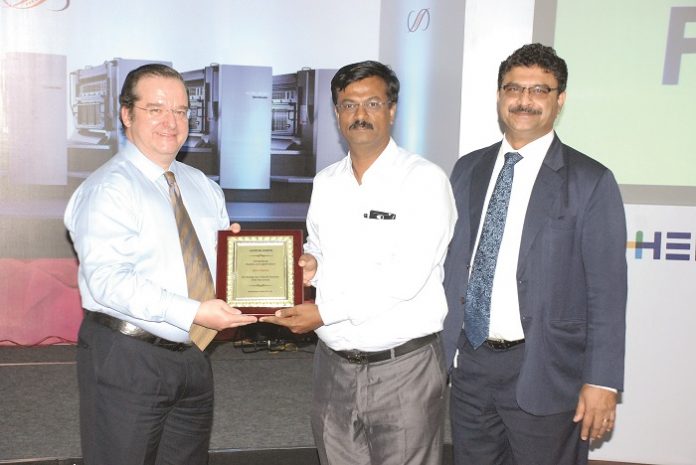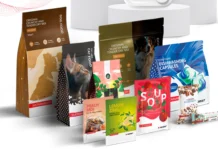
Bengaluru’s Nice Prints has been an old Heidelberg customer. The commercial and packaging printing house which primarily meets the demands of the pharmaceutical industry – cartons and leaflets – has decided to add another Heidelberg printing press to its already substantial fleet. The company has invested in a 5-color CD 102 with UV coater and the machine will be installed at its plant in December.
“We have been using Heidelberg products for a long time and when we were deciding on a new press we could not think of any other name. We already have three Heidelberg printing presses and this will be our fourth,” says Dayananda Nayak, one of the partners in the company.
In addition to three Heidelbergs – one 4-color SM 74 and two Sordz, Nice Prints also has a 2-color Ryobi and single Color Metal presses. The company was witnessing a substantial growth in orders and needed a bigger machine to fully optimize its operations in terms of cost. With the addition of the new CD 102, Nayak expects to add significant printing capacity.
“Our management felt that the current printing set was not optimal for the kind of growth we were seeing. We were not optimizing our cost and needed a machine which was bigger. With the CD 102 we will expand our capacity by almost 35% immediately and by 50% in the medium term,” says Nayak.
Nice Prints has been making rapid investments in the last one year. Little less than a year ago, the company moved into a brand new 35,000 square foot facility. Before the shift, it operated from three separate rented units. All operations have now come under one roof, from prepress to printing to postpress, which employs a Bobst folder-gluer and diecutter.
Another significant investment that the company made around the time it moved into the new premises was to bring prepress operations in-house by installing a Heidelberg Suprasetter A106 CtP system. Before the arrival of the CtP system, prepress activities were being outsourced, which Nayak says, had started creating issues related to time and quality.
In-house CtP saves time, money
In the last one year, Nice Prints has made a lot of savings in time and money by bringing the CtP system in-house. However, apart from savings, the quality of output has also improved because of Suprasetter A106. Since Nice Prints meets the demands of the packaging segment, it found press was apt especially for carton-related jobs.
“The quality, in terms of sharpness of the text area and clarity along with the screen flow smoothness is quite good and has enhanced the overall quality of the output,” says Nayak. He sounds extremely optimistic about the growth prospects of the company with all the new investments in place. “We have made big investments in machines and physical infrastructure in the past one year. Next year should be an impressive one for the company as all these investments will start to kick in. With increased capacity Nice Prints should now be able to fully optimize its operations,” he concludes.










